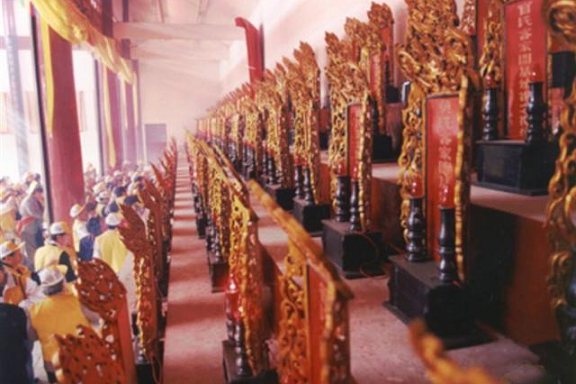·非遗百问·
100.石壁客家祭祖习俗的历史渊源及祭祀活动的文化内涵是什么?
答:石壁客家祭祖习俗是福建省宁化县客家人历代传承的民间祭祖活动。石壁客家祭祖始于明洪武(1368—1398)年间。作为北方移民,石壁客家各宗族在聚居地建造宗祠、家庙,至今保留 200余座,遍及全县 16个乡镇,是祭祖的中心场所。我国历史上客家人南迁多以宁化作为聚集地,因此宁化被海内外称为“客家祖地”,视为“客家摇篮”,民谚称“北有大槐树,南有石壁村”。
客家祭祖沿袭古礼,分为春秋两祭。春祭在清明节,又称清明祭;秋祭在农历八月初一,又称秋清明。公祭(或称官祭)规模盛大;族祭(或称私祭、家祭)则由同一姓氏后裔共同举办,或在祠堂祠祭,或在祖茔墓祭,表达慎终追远的感情。石壁客家祭祖活动,表达客家人祖先崇拜和寻根溯源的深沉信念,显示我国古老文明的光荣传统。
Q100. What is the history of the Shibi Hakka ancestor worship custom and the cultural connotations of worship activities?
Answer: The Shibi Hakka ancestor worship customs are passed down by generations. The earliest ritual was performed in the Ming dynasty. After so many years, the Hakka has now over 200 clan or family temples covering 16 towns and villages in Ninghua, providing places for ancestral worship. Ninghua, as the historical base camp for Hakka people migrated from the North, is dubbed cradle of the Hakka.

石壁客家祭祖习俗(三明市宁化县)
(图片来源于福建省艺术馆——省非遗中心官网)


